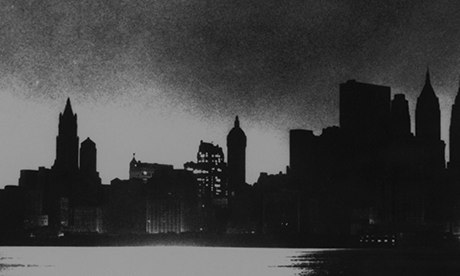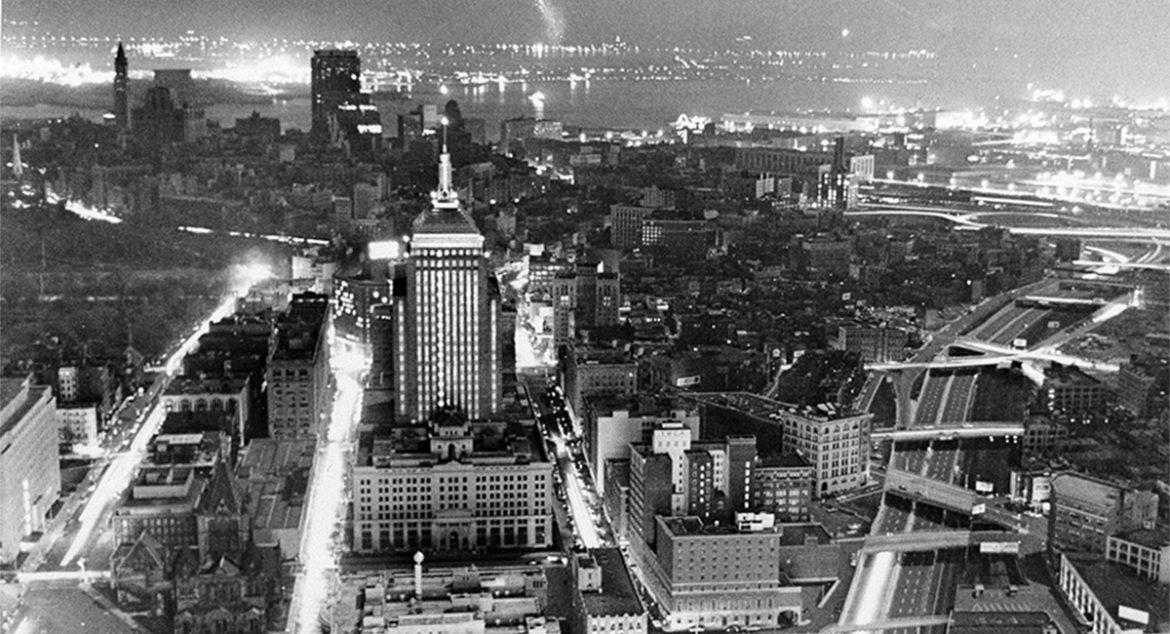A tripped transmission line left 30 million in the dark on November 9, 1965.
Bustling roads, busy streets, and packed train cars. It was rush hour on the evening of November 9, 1965, and everyone had somewhere they need to be.
Written content by Renae Reints via Boston

Edwin J. Nellis, 62, sat in the control chair at Con Edison electric company. He was one of many employees in the vast network of providers composing the Northeast Power Grid. It was an average Tuesday, and Con Edison prepared for the evening rush of electric demand. Just after 5 p.m., the dials in front of Nellis started fluctuating. In Boston, lights dimmed or flickered.
Then suddenly, darkness. From Ontario to New Jersey, power lines failed, and 30 million people found themselves living a moment of history: The Great Northeast Blackout.
In an age when everything was just becoming electric, a faulty relay pulled the plug. Businessmen found themselves trapped in elevators, and shoppers were plunged into darkness. TVs switched off, and refrigerators stopped humming. In New York City, 800,000 commuters were trapped in the subway system. Miraculously, Boston’s MBTA continued running for a while longer. When the T stalled near Kenmore, passengers exited the train car and walked out of the tunnel system.

The northeast power grid began around 1950 when local, independent power generators began connecting their networks to better meet the needs of their customers. By aggregating supply when demand is high, the cost of power is kept down and electricity becomes more reliable.
However, the benefit comes with a risk. Generating plants shut down automatically if they are unable to produce the amount of electricity demanded of them. And if one plant shuts down, a cascade effect follows as connected systems become overwhelmed and customers across the power grid are left in the dark.
Manual fail-safes are in place in case of such a scenario—engineers like Edwin Nellis can watch the flow of power and cut their company loose from the grid if necessary, leaving themselves responsible only for their immediate customers. On that evening in 1965, though, no one was on alert for a power failure. The cascade effect had never happened before, and why would it, on a normal Tuesday evening?
A faulty relay near Ontario was the culprit. The relay caused a key transmission line to disconnect, and the Canadian plant shut down, leaving the rest of the grid in a power vacuum.The remaining providers on the grid were overwhelmed, and within a half hour, Ontario, Quebec, New York, New Jersey, Connecticut, Massachusetts, Rhode Island, New Hampshire, Vermont, and northern Pennsylvania were left in darkness. In total, 30 million people across 80,000 square miles were affected. Read more from Boston.
Follow News Without Politics for more interesting and amazing, important, and relevant U.S. and world news stories plus health, entertainment, sports, weather, food and more without media bias.
Stay informed daily. unbiased news fair and balanced, ahead of influence.




